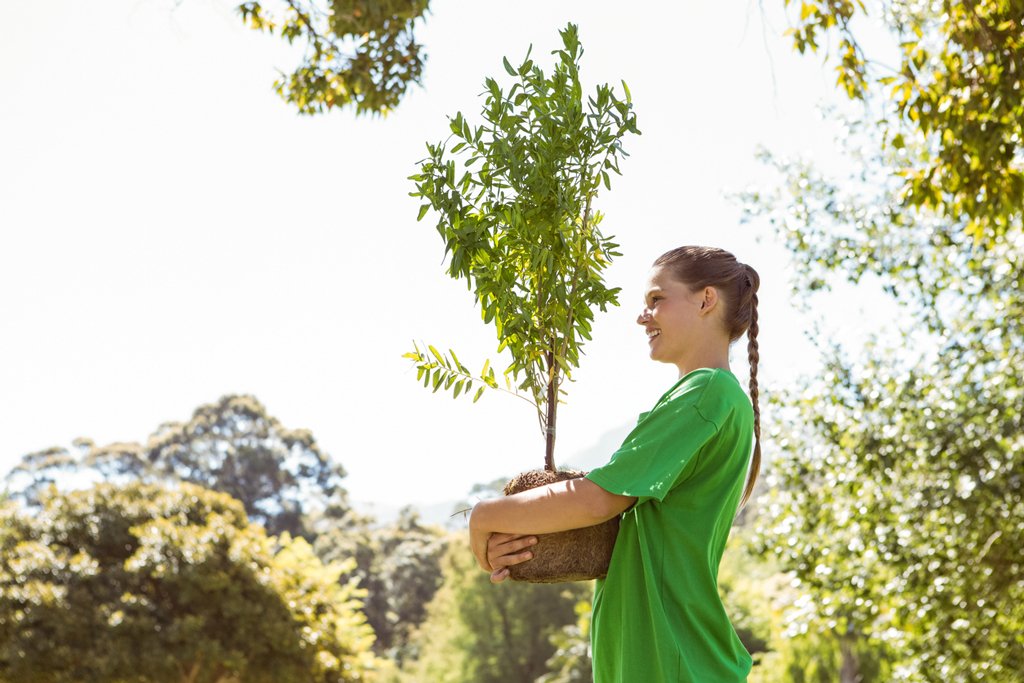New season, new beginnings. Fall is the ideal time to plant a tree or shrub. (A friend of ours told us how her grandmother would plant a new tree each time a grandchild was born. What a wonderful family tradition.)
Before planting, remember to look up and down. Keep in mind your surroundings: power lines, overhangs of your home, garages, sidewalks and driveways, septic systems, and water lines, etc. For example: A lacy oak might grow 30-35 feet tall as opposed to the sugarberry tree, which can grow up to 80 feet in height and 3 feet in diameter.
Before you leave the nursery with a new tree, double check which species you have in hand. For instance, which type of crepe myrtle? Dwarf crepe myrtles grow less than 3 feet tall while others can reach 30 feet. Now, let’s plant.
1. Select an appropriate location for the tree.
Plant a tree that will grow well under local environmental conditions and provide it with plenty of space to mature. This includes both vertical and horizontal space for the canopy and plenty of room for root growth.
2. Dig the hole at least twice as wide as the root ball (wider is better).
Wide areas give roots a place to spread and grow. Dig the hole no deeper than the root ball to keep the tree from settling too deeply and dig square holes to allow for root penetration out of the hole and into the surrounding soil.
3. Fill the hole with water and check the drainage.
If it takes longer than 24 hours to drain, select another site or another tree. A tree will die if its roots are under water for long periods of time. Tree roots need air.
4. Prune the tree sparingly and only if necessary.
Only remove dead, broken, and diseased branches and crushed and girdling roots. Removing even a small portion of the healthy canopy slows root growth and delays establishment. A thoughtfully selected tree requires no pruning.
5. Remove all foreign materials from the tree.
This includes wires, twine, cords, containers, tags, and especially non-biodegradable bags. If planting a balled and burlapped tree, remove as much of the burlap as possible to allow for water infiltration into the bag and root penetration out of the bag.
6. Set the tree in the hole with the root collar flush or slightly above natural grade.
Planting too deeply is a leading cause of mortality of newly planted trees. Do not pick the tree up by the trunk. Always handle by the container or root ball.
7. Gently backfill with the same soil that came out of the hole.
Create a natural environment, not an artificial one. Do not add soil amendments or fertilizer. Too much nitrogen will burn tender young roots, slowing growth and delaying establishment. Settle the soil with water. Tamping the soil causes compaction and damages roots.
8. Stake the tree only if necessary.
Consult a professional if staking is required. Stakes should not be left in place longer than one year.
9. Mulch the trees out to the drip line, 2-3 inches deep, and up to, but not touching, the trunk.
Wood chips, pine bark, leaf litter, hay, etc. are great mulches. Mulch keeps soil temperature fluctuations to a minimum and increases soil moisture retention. Mulch also suppresses weed growth, and organic mulch adds nutrients to the soil.
10. Water the tree for at least one year, preferably two.
A newly planted tree requires 6-8 gallons of water per diameter-inch of trunk per week. A thorough soaking is much better than light, frequent waterings. Till next time. Keep your souls and soles in your garden!
Remember the True Master Gardener: Jesus said, “I am the vine; my Father is the Gardener.” John 15:1
"In the Garden" is written by father-daughter duo Bill and Martelle Luedecke and Bill Luedecke. Contact Martelle at 512-769-3179 or luedeckephotography@gmail.com. Contact Bill at 512-577-1463 or bill@texasland.net.
IN THE GARDEN: 10 tips when planting new trees

NULL
